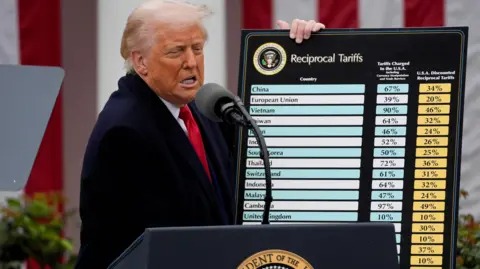China announced that it will suspend its additional 24 % retaliatory tariff on U.S. goods for one year, effective from Nov 10 2025, while retaining a base 10 % import duty on U.S. goods Tariff News. Reuters+3BusinessToday+3chinadailyhk+3 At the same time, China is keeping a 13 % tariff on U.S. soybeans, signalling selective easing. Reuters+1
This move comes after high‑level talks between U.S. and Chinese leaders. China Briefing+1
2. Donald Trump’s global tariff programme under legal scrutiny
In the U.S., the Supreme Court of the United States has heard arguments challenging the legality of President Trump’s sweeping tariffs, specifically those imposed under the International Emergency Economic Powers Act (IEEPA). AP News+1 Justices expressed strong scepticism about whether the executive branch has the authority to impose broad import tariffs without Congressional involvement. The Washington Post+1
This is a major potential turning point for U.S. trade policy.
3. Geopolitical trade shifts: “Poison‑pill” clauses and regionally targeted tariffs
The U.S. is embedding what are being called “poison‑pill” clauses into new trade agreements with countries like Malaysia and Cambodia — enabling the U.S. to terminate deals if those countries engage in trade with China or other adversaries in ways that threaten U.S. interests. Financial Times
This signals that tariffs and trade rules are increasingly being used as geopolitical tools, not just economic ones.
4. Impact on third‑party countries and sectors
For example, India’s seafood export sector is feeling pressure due to increased U.S. tariffs (effective rate around 58.26 %) on exports to the U.S. market. The Times of India This points to how tariff policies between major powers can ripple outwards and affect other countries’ industries.
Why this matters
-
Trade flows & market access: Reductions or shifts in tariffs (like China’s suspension) open up possibilities for exporters and importers. Conversely, uncertainty (such as the U.S. legal case) can freeze investment decisions.
-
Cost & consumer prices: Tariffs increase costs for importers, which ultimately can raise prices for consumers or cut margins for businesses. Studies show large welfare effects from tariffs and trade diversion. arXiv+1
-
Business strategy & supply‑chains: Companies may need to rethink sourcing, locate manufacturing differently, or hedge against tariff risk. For example, seafood exporters in India are urged to diversify markets. The Times of India
-
Legal & institutional precedent: The U.S. court case may redefine how tariffs can be imposed — whether via executive action or only via Congressional legislation — which has major implications for trade policy stability.
-
Geopolitics & alliances: Tariffs are being used as tools in power dynamics (U.S.–China rivalry, influence in Southeast Asia). The statements from China suggest they view the suspension as part of a larger diplomatic recalibration. BusinessToday+1
What to watch going forward
-
The outcome of the U.S. Supreme Court’s ruling on executive tariffs. If the court rules against the executive’s power, many existing tariffs could be challenged or rolled back.
-
Whether the China‑U.S. tariff suspension turns into a more permanent easing or if it’s a temporary de‑escalation.
-
Response from companies: will exporters to the U.S. or China ramp up business, or will they remain cautious because of uncertainty?
-
How smaller countries caught in between (e.g., Southeast Asian states) will respond to trade pressure from larger powers.
-
The broader market reaction: global stock markets are already showing sensitivity to trade‑conflict signals. The Guardian
What it could mean for Pakistan (and similar emerging economies)
Given your location in Pakistan, here are a few tailored implications:
-
If U.S.–China trade tensions ease, it could ease pressure on global supply‑chains — good for Pakistani exports that rely on intermediate goods.
-
If major economies divert trade flows because of tariffs (e.g., sourcing from somewhere cheaper to avoid duties), Pakistan might gain competitive opportunities — if it positions itself well.
-
On the flip side, increased tariffs by the U.S. or other major markets on global commodities or manufactured goods may increase input costs for Pakistani exporters.
-
Policymakers and exporters in Pakistan should keep an eye on: which goods are being targeted, which markets are diverting, and how global trade patterns are shifting.
